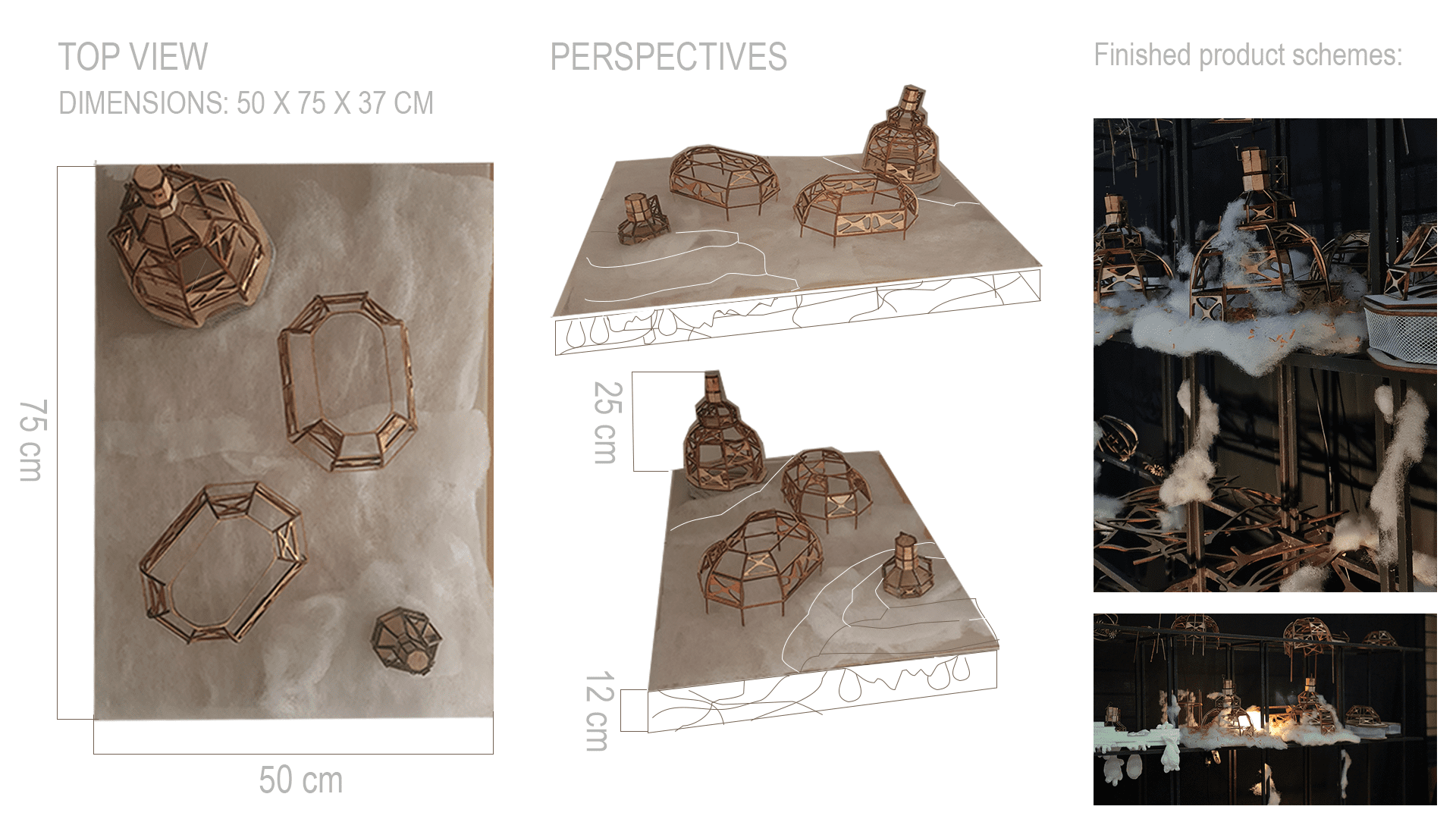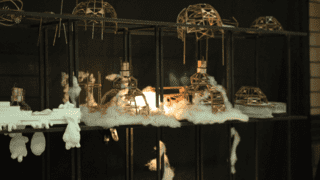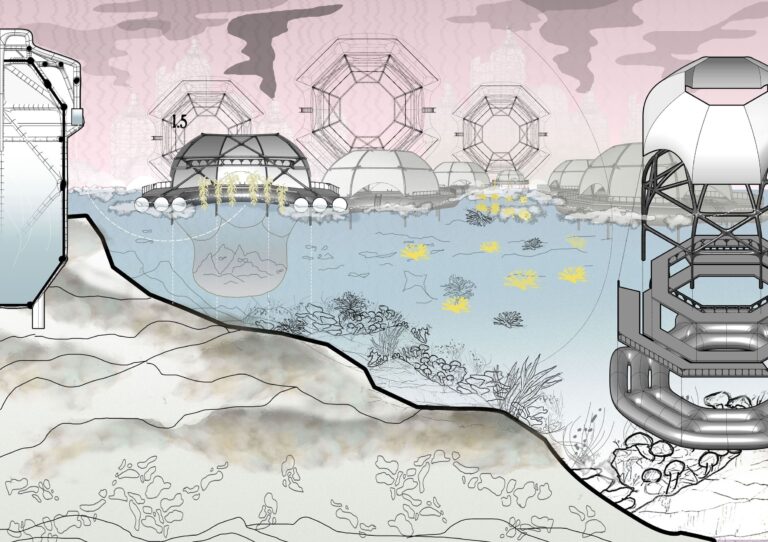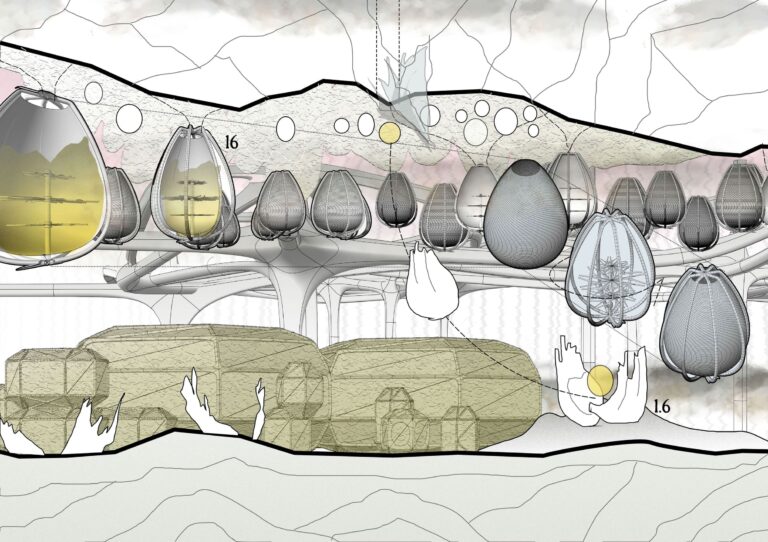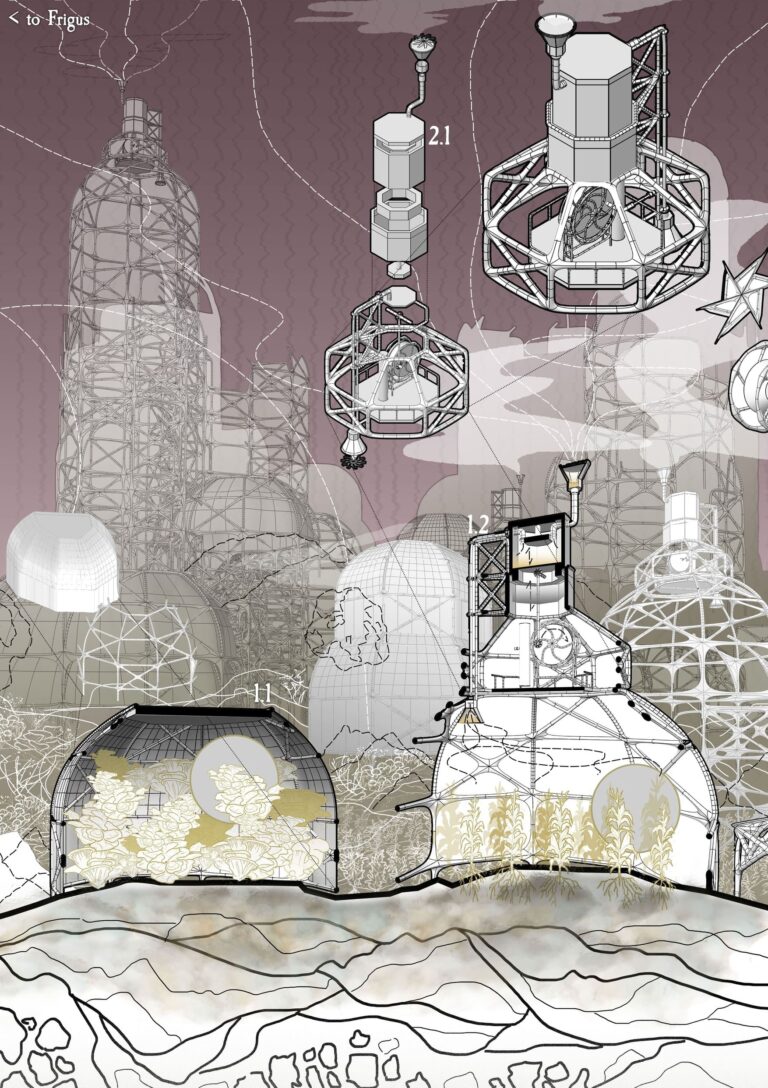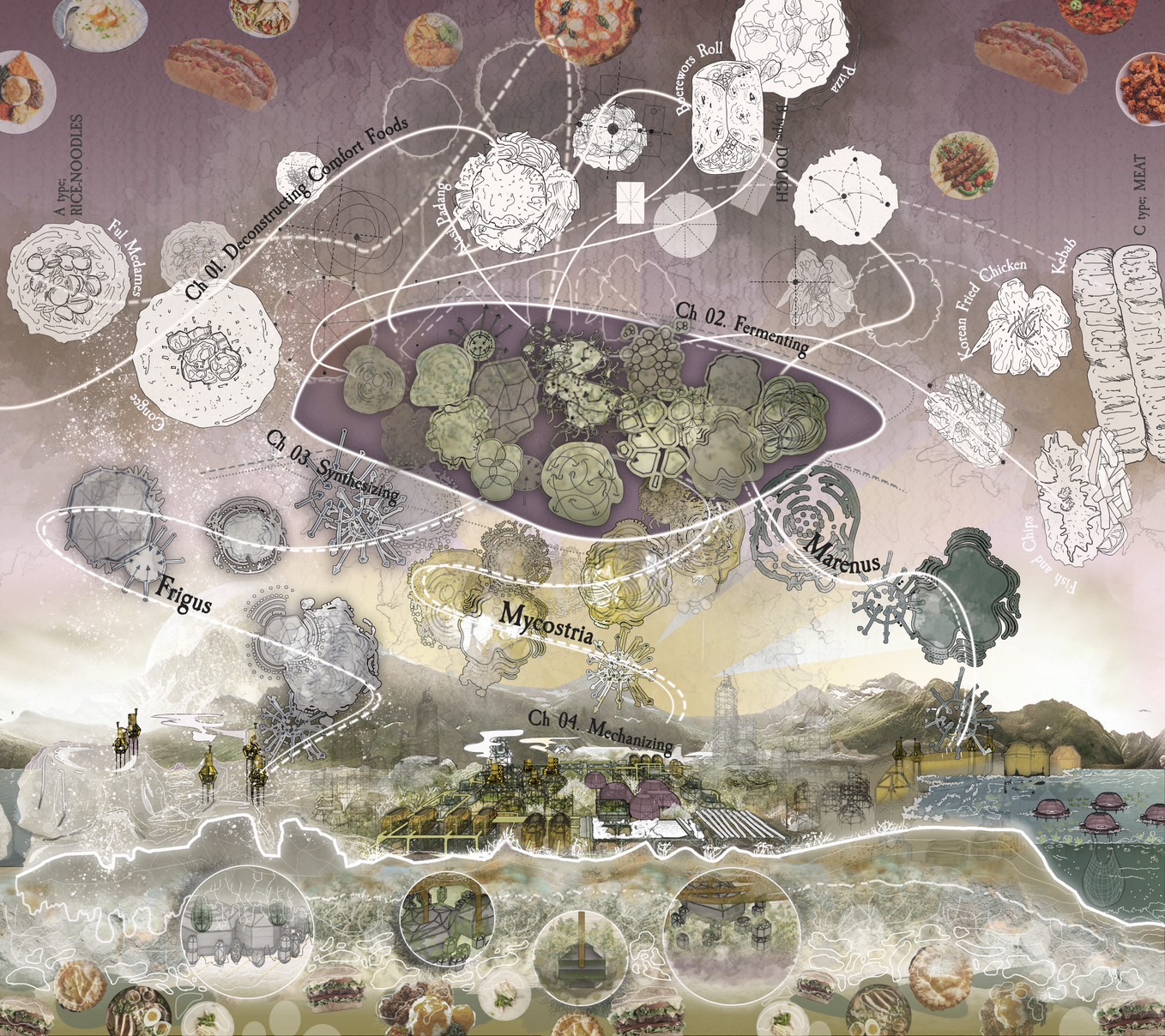

(University of Indonesia)
Ambrosia: Food Fermentation-based Architecture
Imagine the floor beneath our steps, the columns that hold our roof, and the clothes that cover our bodies are all made from food that somebody ate a thousand years ago. Thus remains the question of how will the architecture be if it starts from food, how will it become food again? Is it still the food we know today? Expand the possibilities with Ambrosia where food is eternity. Where food waste becomes nourishment, scarcity becomes abundance, and food becomes our gods.
Ambrosia emerges as an architectural design that intertwines the food production and consumption system with food waste, shaping a new Earth landscape. By exploring the fermentation process of food waste and studying typology-anti typology, the world of food will be arranged into three districts: Mycostria, Marenus, and Frigus. The food waste is processed through specific fermentation methods tailored to each district’s location, thereby utilizing food waste as the primary material for the infrastructure system. An underlying notion suggests, if what we eat is good for us, then what’s left over should be valuable too. Therefore, what lies in store for our dinner leftovers – could it be a school, a mall, or perhaps something entirely unknown to us?
